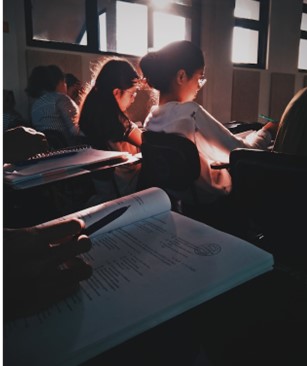
Mindfulness is a powerful tool in wellness practices. When performed regularly, it can help reduce anxiety and stress levels.
In school or educational settings, practicing mindfulness can be beneficial for students learning as well. Daniel Swersky explores the benefits of utilizing these wellness techniques in an educational setting as well as some practices that should be adopted.
The Benefits
Reducing Anxiety in Students
The COVID-19 pandemic left its mark on students, forcing school closures and isolating students from their peers. In a study on the impact of the pandemic on students’ mental health, researchers found that it led to an increased prevalence of Major Depressive Disorder (MDD) and Generalized Anxiety Disorder (GAD) in students.
The mental health crisis in America is a pressing issue that needs to be urgently addressed. Practicing mindfulness can help reduce the anxiety students feel, but only if implemented effectively. Teachers and school leaders need to actively engage students to participate in such practices like meditation and provide the space for them to do so.
Improving Focus in Learning
By practicing mindfulness, students may experience improved attention in learning.
In a study on the effect of mindfulness on learning, researchers found students who participated in mindfulness practices regularly had improved attention toward their learning and reported feeling less stress.
Common Mindfulness Techniques
Five Senses Exercise
This exercise is easy for students to follow with a 5-4-3-2-1 pattern. Students should first be seated or stationary for this exercise. Once situated, they should start listing five things they see, four things they feel, three things they can hear, two things they can smell, and one thing they can taste.
By going through each of their five senses individually and attributing one thing in their setting to the sense, students can ground themselves and refocus their attention back on the classroom. This can be effective after recess, lunch, or gym time when students may need help adjusting back to the formal classroom setting.

Box Breathing
Used by military, doctors, professional athletes, and others who often face high-pressure situations, box breathing is an effective exercise that can help lower anxiety.
To start, students should envision a box while going through the four steps of box breathing. First, students should breathe in four slow breaths. In the second step, students should hold for four counts. In the third step, students should exhale through their mouths for four counts. In the fourth step, students should relax for four counts before repeating the process.
This method may be effective to do right before an exam or class presentation. By taking a few moments to breathe, students may reduce anxiety and feel more grounded, which can lead to better performance.
Conclusion
Mindfulness practices can be an asset in everyday life, as well as the traditional classroom settings. With just a few minutes a day, students who practice mindfulness can lower their stress and anxiety levels. This can benefit students’ overall school performance as well as their well-being.







